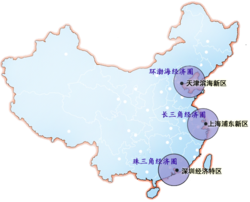

| Visitors Now: | |
| Total Visits: | |
| Total Stories: |

| Story Views | |
| Now: | |
| Last Hour: | |
| Last 24 Hours: | |
| Total: | |
China’s Urbanization Dividend will be key to rebalancing the economy
From
The scale of that urbanization has no precedent, with as many as about 600 million people moving to the cities in the next 20 years, Shen says. While authorities are encouraging farmers to migrate to local small towns rather than overcrowding large cities, migrant workers will likely follow job opportunities. As a result, Shen thinks the urbanization will occur in megaregions or urban zones, in part because of the development of high speed rail systems and also because of where college student enrollment is high.
“Five mega-regions may gradually emerge as the key centers of urbanization, led by what we term the “XYZ” urban zones in the Pan Bohai Bay Area (X), Pearl River Delta (Y, including Hong Kong and Macau) and Yangtze River Delta (Z). These three regions accounted for 28% of China’s population and 41% its GDP in 2011, and will likely gain further in the next two decades given their locational advantages,” he writes.
Nextbigfuture has covered the Bohai and other emerging megaregions of China.
The three major economic mega-urban zones are the pearl river delta in the south (merging into one 42 million person city) and Yangtze River delta around Shanghai and the Bohai economic rim
The area around Beijing and Tianjin, two of China's most important cities, is being ringed with a network of high-speed railways that will create a super-urban area known as the Bohai Economic Rim. China is merging Beijing/Tianjin and several other cities around the Bohai Sea into one big super-urban zone over the next several years. By 2020 there could be 260,000,000 people (3% of the world's population) in one big super-city.
See more and subscribe to NextBigFuture at 2012-10-23 16:23:30 Source: http://nextbigfuture.com/2012/10/chinas-urbanization-dividend-will-be.html
Source:



